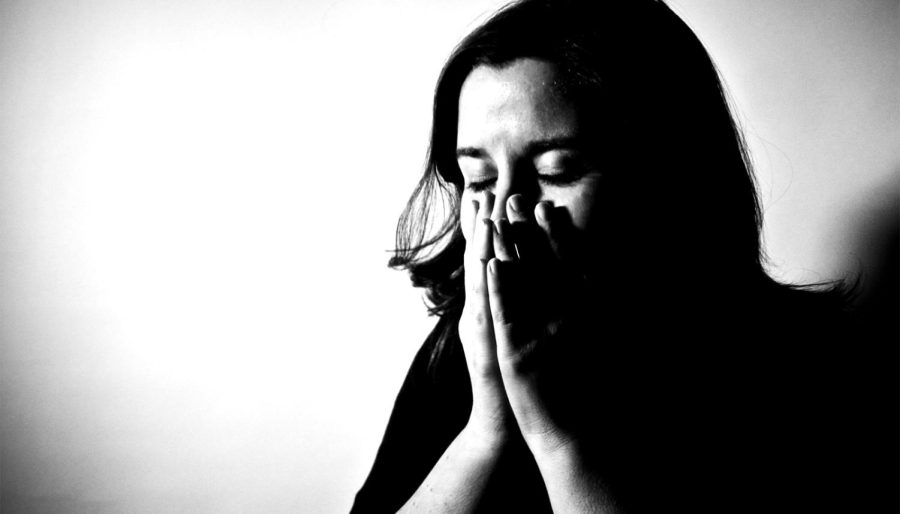Anxiety Disorders: What are they?
February 4, 2022
The word ‘anxiety’ gets thrown around very often, and for good reason. Anxiety is a very normal and human response to stress, and in some situations, can even be beneficial. However, there is a point where it can become too overwhelming, and actually begin to affect the quality of one’s life. This becomes especially true for a person with an anxiety disorder, where anxiety typically does not subside or go away, and simply worsens over time.
Psychologists, over the years, have identified six major types of anxiety disorders. These include phobias, generalized anxiety disorder, panic disorder, social anxiety disorder, obsessive compulsive disorder (OCD) and post traumatic stress disorder (PTSD), and separation anxiety. Disorders such as these can vary from mild to severe, and as with nearly every other mental disorder, are a result of both genetic and environmental factors.
A phobia is an excessive and irrational fear of a specific object, situation, place, or activity that is generally not harmful. There are many different kinds of phobias, including a very common arachnophobia, which is an extreme fear of spiders, and trypanophobia, the fear of injections. “The impact of a phobia can range from annoying to severely disabling,” author Andrea Wodele writes. “People with phobias often realize their fear is irrational, but they’re unable to do anything about it. Such fears can interfere with work, school, and personal relationships.”
Another type of an anxiety disorder is generalized anxiety disorder. It can be identified when an abundance of anxiety or worry is displayed for most days for 6 months or more. Generalized anxiety disorder may accompany many physical symptoms like restlessness, the feeling of being on edge, and fatigue. According to “6 Major Types of Anxiety Disorders,” it usually has no specific focus, and someone with this disorder “worries about a range of different topics, which may include school or job performance, finances, world events, natural disasters, relationships with others, and other topics.”
Yet another anxiety disorder is known as panic disorder. This disorder causes recurrent and typically unexpected panic attacks. During such an attack, one may experience a combination of both physical and psychological distress. Most people experience very few panic attacks in their lifetime, but someone with a panic disorder may have them very frequently as a result of both major stress and genetics. However, treatment for panic disorder is available and is very effective in most cases.
Social anxiety disorder, sometimes referred to as social phobia, is a persistent and sometimes very intense fear or anxiety towards social situations. In social anxiety disorder, everyday interactions can cause significant anxiety, self consciousness, and embarrassment, all because of the fear of being judged by others. Social anxiety often varies in severity, but it is incredibly common. In fact, about fifteen million, or 7%, of American adults have social anxiety disorder, and more than 75% of people experience their first symptoms of social anxiety during childhood and adolescence.
Obsessive-compulsive disorder and post traumatic disorder are both very unique, but both have very different meanings. OCD is an anxiety disorder that “occurs when a person gets caught in a cycle of obsessions and compulsions.” Obsessions that are caused by OCD are unwanted and out of the person’s control. Meanwhile, PTSD is a very serious anxiety disorder that occurs when one has experienced or witnessed a traumatic event. PTSD involves intense, disturbing thoughts and feelings related to the experience. Though treatable, PTSD often never goes away, and is a result of someone’s environment and past experiences.
The final, major type of an anxiety disorder is separation anxiety. Separation anxiety is when “someone has persistent and excessive worry about being separated from or losing a caregiver or attachment figure.” Though it is very common in young children from six months to three years of age, it becomes a “real” disorder when symptoms carry on into late childhood, and sometimes even adulthood. Undiagnosed separation anxiety disorder can even lead to other anxiety disorders like panic disorder later on in life.
One in five people in the United States alone have been diagnosed with an anxiety disorder, and yet, these mental illnesses are incredibly stigmatized and misunderstood. Having a disorder is not something to be taken lightly, and, like every other disorder, should never be glorified or faked. Anxiety disorders are real, serious issues that millions of people struggle with, and actions that idealize these disorders are very harmful to people who actually have them.




